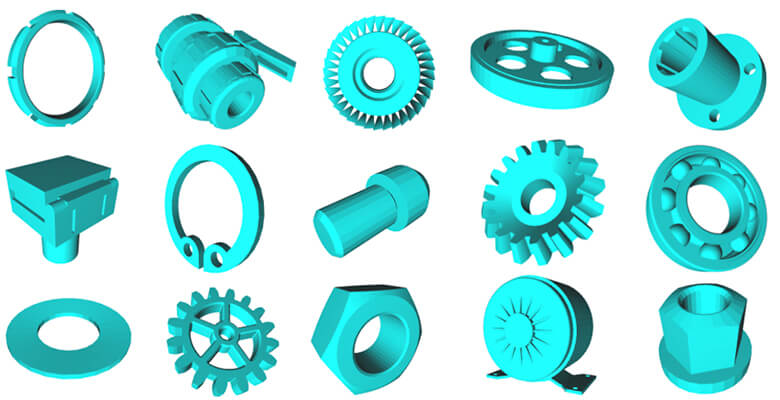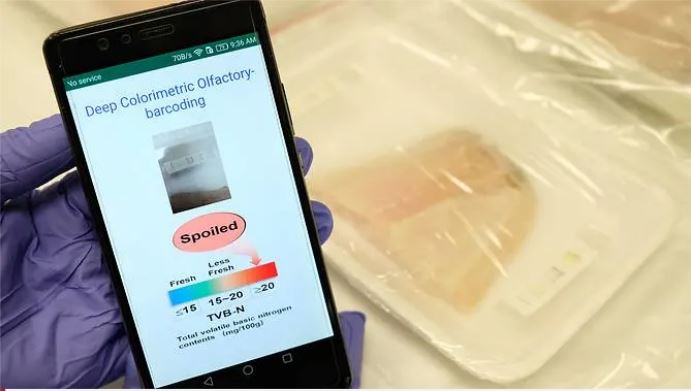(Machine learning for making machines: Applying visual search to mechanical parts)
2020/11/12 アメリカ合衆国・パデュー大学

・ パデュー大学とテキサス大学オースチン校が、58,000 個超の 3D 機械部品に関する包括的なオープンソースの注釈付きデータベースを開発。世界初の大規模なベンチマークデータセットとして、機械部品の認識や情報管理における機械学習の活用を支援する。
・ 機械学習はオブジェクトの画像認識のトレーニングで広く利用されているが、ギアボックス、ベアリングやボルト等の機械部品での応用例は極めて少ない。カメラを向けるだけでコンピューターが機械部品やその設計について情報を提供する、機械学習を駆使したビジュアルサーチの実現を目指す。
・ 同大学では 2000 年代前半に機械部品の画像サーチを試みているが、当時はコンピューターの演算能力と機械学習技術が不足していた。以降、充実したデータセットの構築には量と品質の両方の重要性を認識。コンピューターが人間の意図するものごとやそれらの相互の関連性を学習するには多数の実例を要する。
・ データベース構築にはエンジニアリング上の分類を含む多数の機械部品の 3D モデルが必要となるため、フランスの TraceParts 社が提供する 3D エンジニアリング部品のデータベースと、テキサス大学が探索した類似する 3D モデルの他のデータベースから 58,696 個の機械部品のデータセットを蓄積した。
・ また、データベースには優良なデータが不可欠なため、国際標準化機構(ISO)が管理する国際的な技術規格体系の国際規格分類をベースに 68 種類の階層的な分類法を構築して部品を整理。例えばシール部品は合成シール下のダイナミックシールのカテゴリーに属すると判断する。オープンソース化した同データセットでは、コンピュータービジョンや機械学習の研究者らによるアクセスと実験を歓迎。
・ 例えば、工場の機械にカメラを向けるとコンピューターが部品を認識し、部品の名称や在庫の場所等の仕様を直ちに提供したり、AR メガネでは全ビジュアルカタログを指先で閲覧し、修理や部品の注文をするといった利用方法が考えられる。
・ 本研究は、米国科学財団(NSF)のグラントが一部支援した。
URL: https://www.purdue.edu/newsroom/releases/2020/Q4/machine-learning-for-makingmachines-applying-visual-search-to-mechanical-parts.html
<NEDO海外技術情報より>
(関連情報)
16th European Conference on Computer Vision (ECCV) 2020 発表論文(フルテキスト)
A Large-scale Annotated Mechanical Components Benchmark for Classification and Retrieval Tasks
with Deep Neural Networks
URL: https://www.ecva.net/papers/eccv_2020/papers_ECCV/papers/123630171.pdf
Abstract
We introduce a large-scale annotated mechanical components benchmark for classification and retrieval tasks named Mechanical Components Benchmark (MCB): a large-scale dataset of 3D objects of mechanical components. The dataset enables data-driven feature learning for mechanical components. Exploring the shape descriptor for mechanical components is essential to computer vision and manufacturing applications. However, not much attention has been given on creating annotated mechanical components datasets on a large scale. This is because acquiring 3D models is challenging and annotating mechanical components requires engineering knowledge. Our main contributions are the creation of a large-scale annotated mechanical component benchmark, defining hierarchy taxonomy of mechanical components, and benchmarking the effectiveness of deep learning shape classifiers on the mechanical components. We created an annotated dataset and benchmarked seven state-of-the-art deep learning classification methods in three categories, namely: (1) point clouds, (2) volumetric representation in voxel grids, and (3) view-based representation



